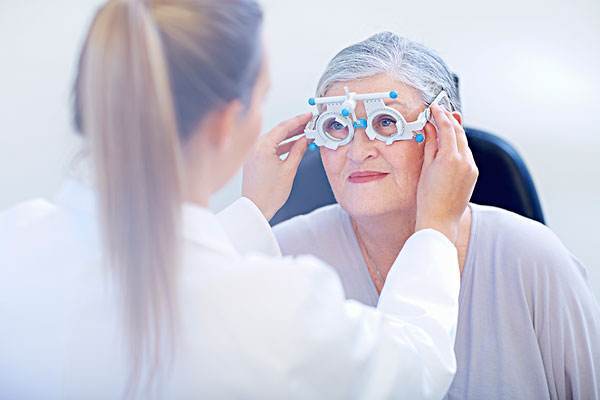Recovering from cataract surgery requires careful attention to daily routines to support healing and protect the eyes. While the surgery itself is typically straightforward, the recovery period is critical for ensuring that vision stabilizes and the eyes remain healthy. During this time, a combination of proper nutrition, hygiene, rest, safe physical activity, and careful lifestyle choices can significantly influence recovery outcomes. Following a structured daily care routine can help prevent complications, reduce discomfort, and promote efficient healing. By understanding the key areas of post-surgery care and integrating them into everyday life, individuals can create an environment that supports eye health and overall well-being.

1. Nutrition and Hydration
A balanced diet is an essential part of recovery after cataract surgery. Nutrients such as proteins, vitamins, and minerals help repair tissue and support the body’s natural healing processes.
- Light, balanced meals: Focus on easily digestible foods prepared with moderate amounts of oil, salt, and sugar. Steamed vegetables, soups, lean proteins, and whole grains are good choices.
- Protein intake: Proteins are crucial for tissue repair. Include sources such as fish, poultry, eggs, legumes, and dairy products in daily meals.
- Vitamins and antioxidants:
- Vitamin A supports eye health and can be found in carrots, sweet potatoes, and leafy greens.
- Vitamin C aids tissue repair and collagen formation, present in citrus fruits, bell peppers, and strawberries.
- Vitamin E has antioxidant properties and is found in nuts, seeds, and plant oils.
- Minerals: Zinc and selenium contribute to immune function and are present in seafood, whole grains, and seeds.
- Hydration: Drinking sufficient water helps maintain body functions and supports healing. Limit sugary drinks and excessive caffeine.
2. Eye Protection and Hygiene
Proper eye hygiene is critical for preventing infection and promoting recovery.
- Hand hygiene: Always wash hands thoroughly before touching the eyes or applying eye drops.
- Gentle cleaning: Clean the eyelids and surrounding areas with a soft cloth or sterile wipes recommended by your healthcare provider. Avoid harsh soaps.
- Eye drops: Use prescribed eye drops exactly as instructed. Do not allow the dropper to touch the eye surface.
- Protective eyewear: Wear sunglasses or protective glasses when outdoors to reduce exposure to dust, wind, and UV light.
3. Rest and Sleep
Adequate rest is essential for overall healing and eye recovery.
- Sleep schedule: Maintain regular sleep hours and avoid staying up late to allow the body to repair itself.
- Sleeping environment: Use clean pillowcases and avoid sleeping in positions that place pressure on the eyes. A slightly elevated head position can be beneficial.
- Visual rest: Limit activities that strain the eyes, such as prolonged reading, computer use, or screen time, especially in poorly lit environments.
4. Physical Activity
Physical activity should be carefully managed to avoid increasing eye pressure or causing strain.
- Avoid strenuous exercises: Heavy lifting, high-impact sports, and bending sharply should be avoided during early recovery.
- Engage in gentle activities: Walking or light stretching is generally safe and supports circulation without stressing the eyes.
- Gradual return to regular activities: Slowly increase the intensity of physical activities based on comfort and guidance from your healthcare provider.
5. Environmental and Lifestyle Considerations
The environment and lifestyle habits also play an important role in recovery.
- Clean living environment: Keep bedding, towels, and frequently used surfaces clean to reduce exposure to dust and bacteria.
- Avoid irritants: Smoke, dust, and polluted air can cause discomfort or increase infection risk. Protective eyewear can help when exposure is unavoidable.
- Limit cosmetic products: Avoid applying makeup, creams, or lotions near the eyes until fully healed.
6. Monitoring and Follow-Up
Close observation during recovery helps identify potential issues early.
- Track symptoms: Mild discomfort, slight redness, or temporary blurriness can be normal. Seek medical advice for sudden pain, swelling, discharge, or changes in vision.
- Attend follow-ups: Regular appointments allow healthcare providers to monitor healing progress and intervene promptly if necessary.
7. Practical Daily Checklist
To make daily care easier, consider the following checklist:
- Wash hands before any contact with the eyes.
- Apply eye drops as prescribed.
- Eat balanced meals with adequate protein, vitamins, and minerals.
- Drink sufficient water throughout the day.
- Wear protective eyewear when outdoors.
- Maintain a clean sleeping and living environment.
- Rest adequately and avoid eye strain.
- Engage in gentle physical activity.
- Avoid irritants and cosmetic products near the eyes.
- Monitor for unusual symptoms and attend scheduled follow-up appointments.
Conclusion
Caring for the eyes after cataract surgery requires attention to multiple aspects of daily life, including diet, hygiene, rest, physical activity, and environmental factors. Consistent attention to these areas supports safe and smooth recovery, reduces the risk of complications, and promotes overall eye health. By following a structured daily care routine and incorporating these habits into everyday life, individuals can optimize healing and regain stable vision in a comfortable and safe manner.
